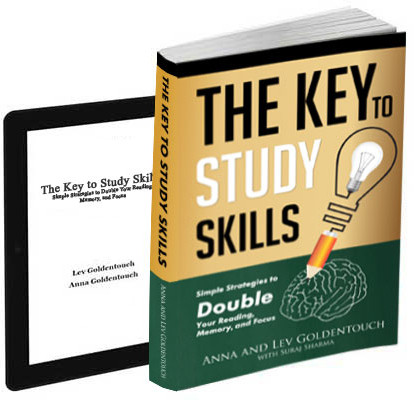Developing Your Personal Learning Style: Finding What Works for You
In the journey toward becoming a superlearner, there’s no one-size-fits-all method. The most effective learners are those who discover, refine, and consistently use a personal learning style that matches their strengths, cognitive preferences, and goals.
While most educational systems push standardized methods, the reality is that personalized learning styles yield better outcomes—faster reading, higher retention, and deeper comprehension. Whether you’re a visual thinker, a data-driven technocrat, or an emotionally intuitive learner, identifying your unique learning signature is key.
This guide outlines various styles adopted by successful students—from minimalist speedreaders to immersive memory palace builders—and offers insights into how you can identify and refine your own.
Why You Need a Personalized Learning Style
When learners rely on cookie-cutter techniques, they often hit a plateau. Either their speed improves, but retention drops, or they remember everything, but progress becomes painfully slow. This is where self-awareness becomes crucial. Understanding your mental habits, processing preferences, and natural strengths allows you to build a system that works for you, not against you.
Developing your learning style also helps combat burnout, confusion, and procrastination. By focusing on what feels intuitive and effective, you increase both your efficiency and enjoyment.
This idea is echoed in the broader field of personality awareness, where identifying how you think and engage with information becomes a gateway to improving learning outcomes.
The Technocrat: Strategic and Stylized
This style is highly analytical. Learners create clean, simplified visual markers—almost like icons—then form deep logical links between them. The marker itself might be basic, but the structure of relationships between data is incredibly rich.
Technocrats prioritize material ruthlessly, shifting reading speed based on importance, from 300 to 3000 words per minute. Retention hovers around 70%, but they absorb vast content quickly, making them ideal for synthesis and innovation.
This style aligns well with those who prefer structured, systemic thinking and aligns closely with principles taught in career and personal growth strategies.
The Perfectionist: Depth Over Speed
At the opposite end is the Perfectionist. Every marker is vivid, rich in detail, and meticulously crafted. This comes at the expense of speed, but retention often exceeds 95%.
While the connections between ideas are simpler—often double links rather than complex maps—the clarity and depth of each concept is exceptional. This method suits learners who value mastery and want to remember everything they read.
However, perfectionists must watch out for diminishing returns. Their challenge is managing time and resisting the urge to over-process every detail.
The Sportsman: Balanced Performance
The Sportsman values consistency and pacing. Visual markers are minimalistic but effective, with just enough detail to capture key ideas. The reading speed is steady at around 800 wpm, and retention fluctuates between 60–85%, depending on the content’s complexity.
This learner focuses on flow, keeping energy and accuracy balanced. This is a highly practical approach for learners who thrive on rhythm and physical engagement, similar to athletic training.
To succeed with this method, learners must actively reflect on what aspects of a text deserve more mental energy, a strategy highlighted well in articles like Focus on Your Strengths.
The Creative: Comics, Colors, and Context
Creatives approach learning like visual storytelling. Instead of abstract icons, they create comic-style pages in their minds. Each panel encodes a scene, and within each scene, every element represents a detail. It’s an immersive method that taps into narrative structure and spatial memory.
Speed drops to around 500 wpm, but retention is high, around 90%. This method is ideal for highly visual learners and those dealing with content that is either incredibly dull or incredibly rich in visuals.
It’s also great for learners who lean on creative habit-building to fuel consistent study behavior.
The People’s Person: Social and Symbolic
Popular with educators, coaches, and sales professionals, this style uses human characters as memory anchors. Each marker becomes a person in costume, and ideas are conveyed through dialogue and movement in a shared space.
This method often leads to 80% retention at around 1000 wpm. It’s excellent for memorizing dialogue, social dynamics, and contextual learning, but it can overlook abstract information or technical data.
Creating a space (like a stage or classroom) where these characters interact helps improve structure and context. It’s ideal for extroverted learners who process ideas better through role-play and discussion. This method works especially well when paired with community learning environments or active discussion, like those found in dedicated study groups or online spaces such as the KeyToStudy Facebook page, where learners exchange methods and experiences.
The Echo Learner: Anchored by Subvocalization
Some learners naturally subvocalize when they read. Instead of resisting this, Echo Learners turn vocal memory into a strength. They use echoed words as the base marker and build mental imagery around them.
Speed typically stays around 800 wpm with 80% retention. While it’s not the fastest or most visual method, it’s stable, reliable, and intuitive for auditory learners.
Echo-style retention can also be improved by adding minimal visual markers or emotional context. For a deeper dive into refining this approach, the method ties into techniques discussed in MBTI and personal style.
The Emotional Learner: Memory with Mood
Emotionally-driven learners attach feelings, colors, smells, or tones to their memory markers. Sometimes, these elements form the background for an entire visualization set. In other cases, the emotion is the main theme of the marker itself.
This method taps deeply into long-term memory but can be chaotic without structure. That’s why emotional learners often benefit from using tools like the “Six Thinking Hats” model or other emotional-categorization systems.
Although less commonly reported, emotional encoding can lead to exceptional memory when paired with other methods. Emotional learners also benefit from exploring strategies that rely on personal strengths, where self-knowledge becomes a learning advantage.
The Highly Visual: Imaginary Landscapes
Some learners, especially those with dyslexia or vivid imaginations, build elaborate imaginary landscapes where their learning unfolds like a movie. This is an advanced memory palace system, with embedded events, structures, and characters.
These students often exceed 1500 wpm and achieve 90 %+ retention. Their mental imagery is stunning in its detail, but it takes time and dedication to develop.
It’s an ideal method for those who are already highly creative and looking to systematize their strengths. These learners should also ensure they manage sensory overload and avoid drifting into fantasy at the expense of comprehension.
The Subliminal Learner: Absorption Without Markers
A rare but fascinating style, subliminal learners can read at extraordinary speeds—sometimes 10,000 wpm—and still retain up to 50% of what they read. How? They skip traditional subvocalization and even marker creation. The material is absorbed directly, albeit with lower comprehension at first.
This style is efficient but fragile. It requires post-processing to understand and retain details. For example, after the initial read, learners may return to review summaries, take notes, or engage in discussions to anchor the content more firmly.
Suppose you’re intrigued by rapid, low-resistance learning approaches and want a deeper blueprint to build your own method. In that case, you might find practical frameworks and exercises in my Amabon Book, which outlines proven strategies for high-efficiency readers.
Final Thoughts: Your Style Is Your Superpower
Developing your personal learning style isn’t just about performance—it’s about sustainability. When your techniques align with your strengths and interests, learning becomes easier, faster, and more fun.
Whether you build vivid memory palaces, skim with icon-based links, or turn every topic into a story, your style should reflect how you think best.
Keep experimenting. Try hybrid styles. Shift your methods depending on the task. And most importantly—b, aware of how your personality shapes your cognition. The more you adapt your tools to your brain, the more unstoppable you become.

Get 4 Free Sample Chapters of the Key To Study Book
Get access to advanced training, and a selection of free apps to train your reading speed and visual memory

